
BF2C-1
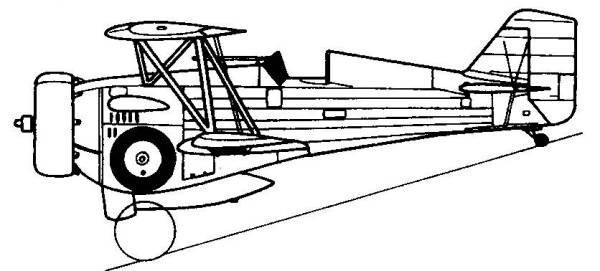
The
United States Navy and Curtiss felt that the F11C-2 possessed
development potential, and the Navy decided to procure a variant with
retractable landing gear. This variant, which still had the F11C-2's
classic "Hawk" wood wing with its flat-bottomed Clark Y airfoil, was
designated XF11C-3 by the Navy and Model 67 by Curtiss. The main gear
retraction system was inspired by the Grover Loening-designed system on
the Grumman XFF-1 prototype, and was manually operated.
The XF11C-3 was first delivered to the USN in May 1933, with a Wright R-1820-80 radial engine rated at 700 hp.
Trials revealed a 17 mph increase in speed over the F11C-2,
but the extra weight caused a decrease in maneuverability. The Navy felt
the handling degradation was more than offset by the increase in speed,
however. During testing the XF11C-3 had its wood-framed wing replaced
by the metal-structured, biconvex, NACA 2212 airfoil wing, and soon
after was redesignated XBF2C-1 (Model 67A) in keeping with the new Bomber-Fighter category.
Twenty-seven
BF2C-1 were ordered by the U.S. Navy, with a raised rear turtleneck, a
semi-enclosed cockpit, and a metal-framed lower wing. It was armed with
two .30 caliber Browning machine guns and three hard points for
500 lb (230 kg) of external stores. The metal wings had a vibration frequency that
was in harmony with the engine at cruising speed. In flight, the airplane seemed
to be shaking itself to pieces, no matter the fixes tried by Curtiss and the
Navy. Curtiss' final solution was an offer to re‑equip the airplanes with the
wooden wing of the successful export variant, the Hawk
The Kit
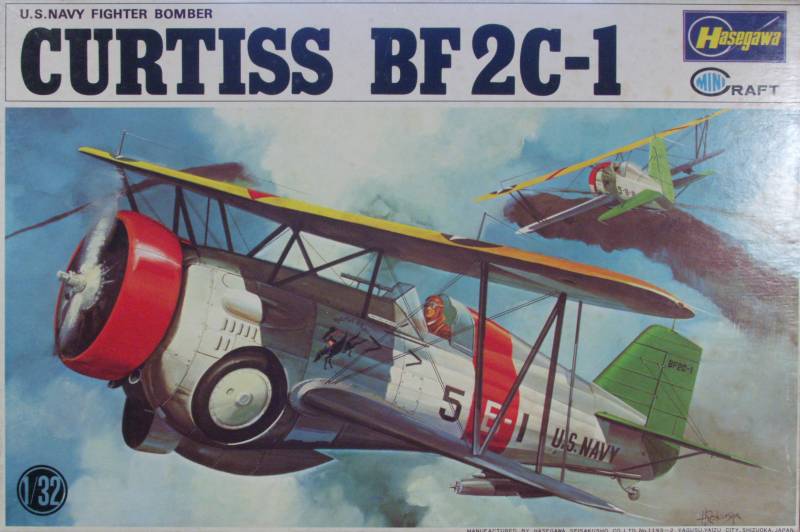
The Hasagawa kit was originally released some time in the 1960s. Since that time it has been released several times, most recently in the early 2000s. The only thing changed were the decals and box art and it is quite well possible that the plastic parts were all molded back at the time of the original release. That said the kit has held up quite well detail wise, lacking only a better detailed cockpit to bring it up to today's standards. The kit I have, one of the early releases came in a top open tray type box made of thin cardboard that was common at the time. Inside the box all of the parts were enclosed in one large bag, this during the time when a lot of kits just had the parts tossed in a box. Unfortunately the clear parts were also in with the rest of the parts. The parts are molded in a silver gray color and since the aircraft is mostly fabric covered there is not a lot of surface detail. The fabric is quite subdued for the time and looks very nice. There are some panel lines around the cowling area that are metal and they are recessed and a bit larger than is the norm today but not excessively so.There are also some raised rivets in this same area but where they are located they should not be damaged by any seam work. There are also some raised fastener detail along the edges of some of the fabric panels. The non fabric areas have a glossy finish and the fabric areas have a matte finish. There is only a light amount of flash present and mold alignment is good and for the age of the kit. Mold separation lines are relatively fine. I did find a couple of sink marks on the upper wing where the alignment sockets for the lower wing pins are but they are very light and should be easy to fill if you are so inclined.
From a detail standpoint the control surfaces are all molded in the neutral position. The cockpit is pretty spartan, not that the real deal was all that complex. You get a floor, seat, joystick, seat support and a rear bulkhead. The instrument panel features raised instrument bezels with rudimentary dial detail inside them. There is some detail molded into one of the fuselage side walls and there is a very rudimentary pilot figure. The engine is pretty basic but should look reasonable painted up. There is a push rod spider for the front as well as a separate ignition ring. The ignition wiring is molded on the front of the cylinders but they are very light and some real wire would probably improve the appearance. The back side of the engine has an intake manifold, separate carborater, separate magnetos and accessory section. Left and right exhaust manifolds complete the engine. The cowling is in two pieces that fit around the engine. The instructions do include rigging instructions but I don't have a reference that I could use to tell how complete it is. There are marks on the wing and fuselage where to drill holes for the rigging but there is rigging from the upper cowl and I could not find any marks there. The cabane struts are molded integral to the upper cowl which should make assembly easier. The wheels are molded in halves and not weighted. There are four bombs and racks to mount under the lower wing and a drop tank for under the fuselage. Lets look at the parts.
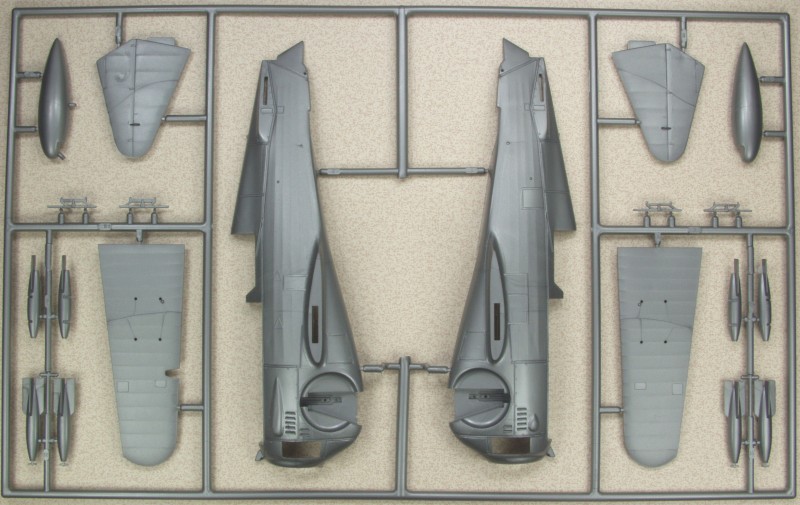
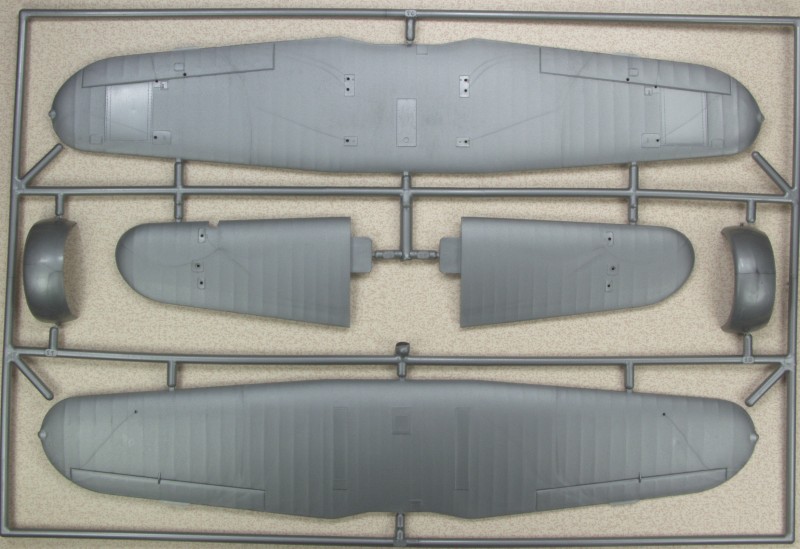
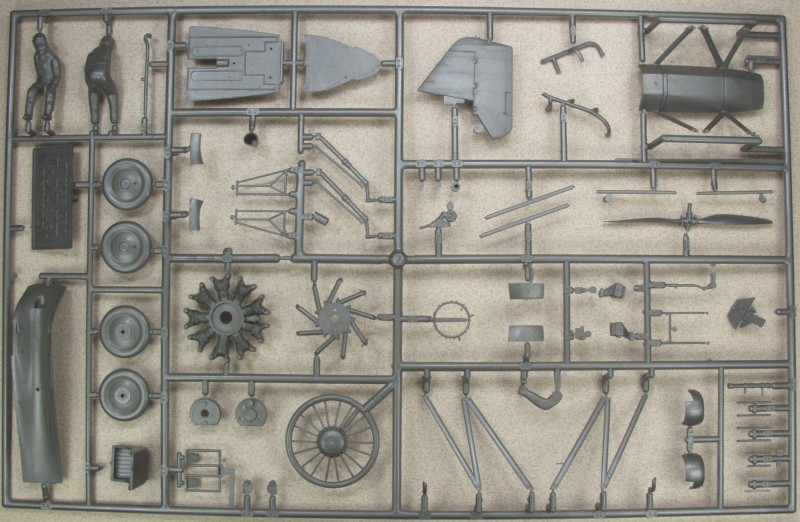
The
clear parts are rather thick and were reasonably clear but having been
mixed in with the other parts left them a bit worse for wear, hopefully
the scuffs will buff out.
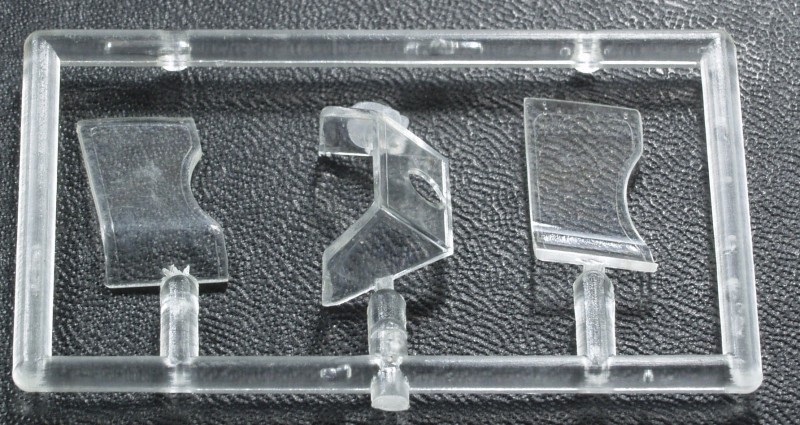
The decals are old and yellowed although they were probably nice when new, not overly thick, in register and opaque with a flat finish. Even though they might bleach out when exposed to the sun for a few days I will make no attempt at using them. The sheet provides markings that would allow you to mark your plane as any of the ones in VB-5B based on the U.S. Ranger in 1934.
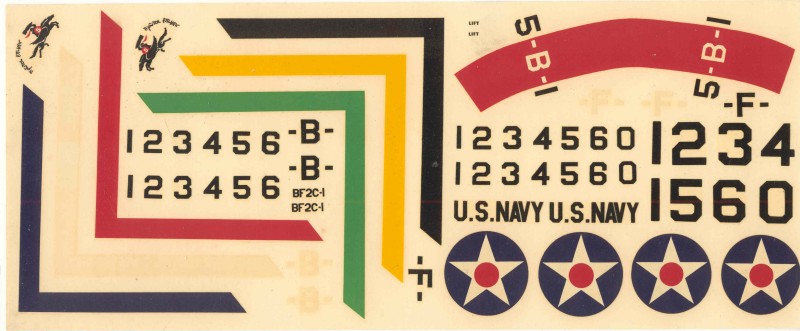
The instructions consists of a small booklet made from two legal sized pages printed on both sides and folded in half to create eight pages. The first page has history and specifications, the second page has a parts map, the next five pages have the assembly diagrams in twelve steps and the last page has painting and marking diagrams. Colors are called out in notes throughout the assembly steps and there are also black and white photos of both the completed model and prototype photos of things like the engine and landing gear. They are printed quite dark so are of limited use.
After Market Goodies
As I mentioned earlier the cockpit is pretty basic. Lone Star Models did a resin cockpit for it and it is shown below. You get a nice instrument panel, a seat with molded in seat belts (harnesses were not in use at this time) Left and right side walls with structure and other items molded in a new floor and front and rear bulkheads. Over the years I have seen some mixed quality with items from Lone Star but this set is one of the better ones with only a few defects and bubbles that need addressed. Lone Star sells only through their website.
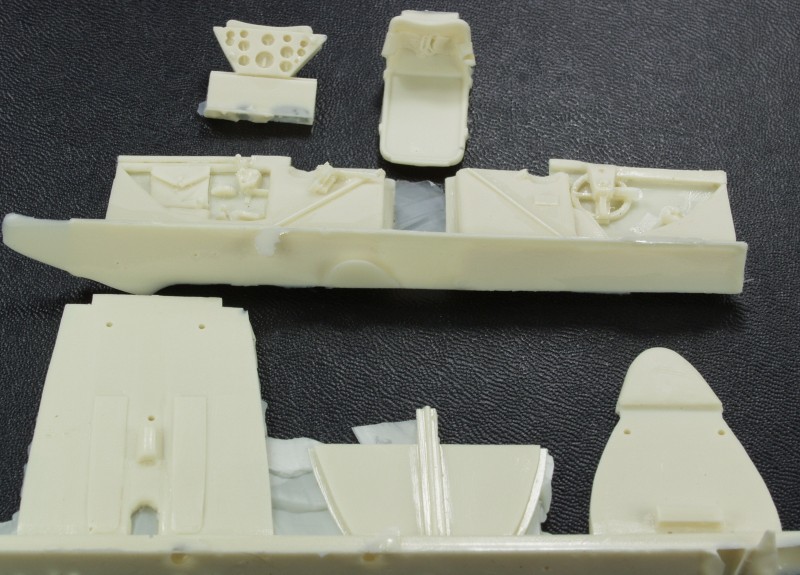
The other major issue with the kits is decals. Fortunately Yellow wings did a set just for the BF2-C. Because of their limited use there are not a lot to chose from. This sheet has markings for two aircraft from the U.S.S. Ranger from 1935. The marking instructions are quite complete including a paint chart of recommended colors with FS numbers and references to Tamiya paints. The decals are printed by Microscale which means quality and these look the part being in register and opaque. The two smaller sheets were supplied but not sure of the purpose as I see no notation anywhere in the instructions referring to them.
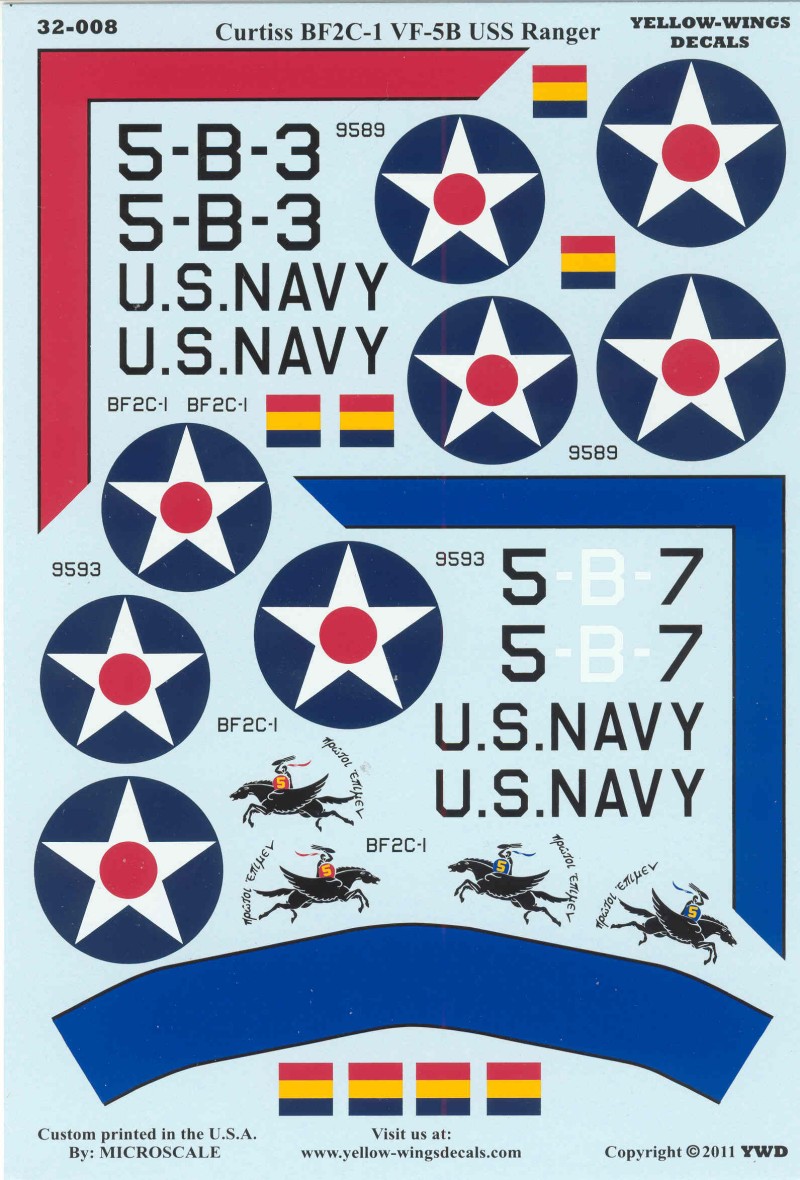
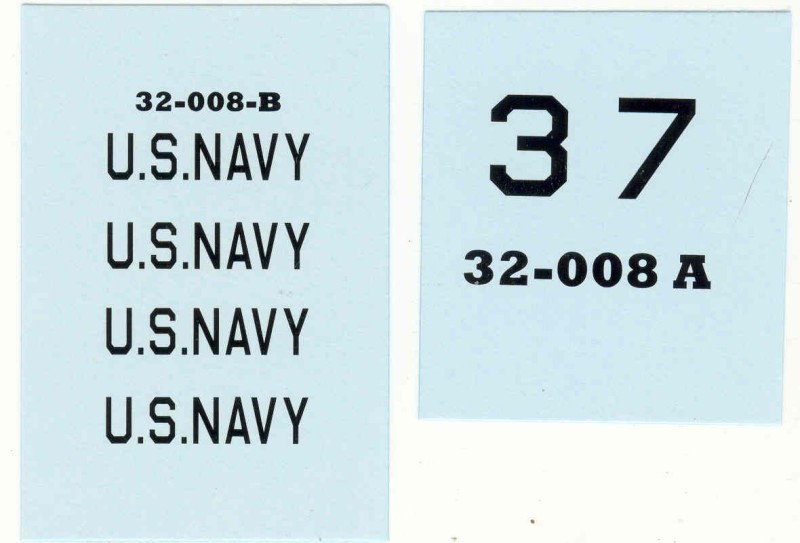
Conclusions
While this kit has been around a while it still builds into a nice looking accurate model and until such time as a newer tool is released, it's the only game in town in this scale. The kit itself is quite simple and though I suspect due to it's age there might be some fit issues, other than the rigging it should be build able by modelers at most experience levels.
Links to kit build or reviews
A build can be found here.
References
History courtesy of Wikipedia
Back to the 1/32 Scale U.S. Aircraft Page